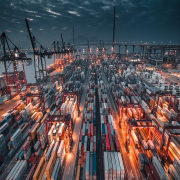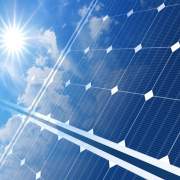Trade and Market Update: Natural Gas and the Geopolitics of Energy

The Ukraine crisis and Western-led sanctions against Russia are redefining the geopolitics of energy and expanding opportunities for new players. Russia is the world’s second largest producer of natural gas and accounts for about 26 percent of global gas exports. In the years leading up to the Ukraine crisis, Russia was the main supplier to Europe, with major investment in pipelines (Nord Streams 1 and 2) that ensured a stable flow of gas into the continent.
The 27-country European Union (EU), which consumes 11 percent of the total global energy supply, relied on Russia for 40 percent of its natural gas and 25 percent of its oil before the crisis that began when Russia invaded Ukraine in February 2022. Sanctioning such a major player and key trading partner was naturally going to rattle energy markets, just as countries scrambled for new sources of gas in the face of supply chain disruptions and a sharp increase in energy prices. In the immediate short term, the impact of sanctions against Russia resulted in both a dramatic reduction in the supply of natural gas to Europe and a sharp increase in prices.
Prices reached a record high of US$9.3 per million British thermal units (MMBtu) in June 2022, representing a 166 percent increase over the same period the previous year. The spot price reached a peak of US$9.7/MMBtu in August before declining to US$6.2/MMBtu by the end of October. The slight decrease in the price is due to a combination of several factors, including the emergence of alternative sources of energy that are increasing production and easing supply chain bottlenecks. According to International Energy Agency (IEA) forecasts, gas production will average 99.6 billion cubic feet per day (Bcf/d) in 2023, up from 95.1 Bcf/d in the first quarter of 2022.
More than increasing the production of natural gas at the global level, the reordering of supply chains for greater resilience is redefining the global energy landscape and reopening new opportunities in Africa. The continent, where more than half of countries have proven gas reserves that collectively are estimated to exceed 620 trillion cubic feet, stands to benefit from these geopolitical developments. This is particularly the case for five countries (Algeria, Egypt, Libya, Mozambique, and Nigeria), which have the largest reserves of gas on the continent. Together, these countries account for more than 578 trillion cubic feet.
The positive outlook for Africa’s natural gas also is supported by recent discoveries of gas fields and the launch of megaprojects that encompass both gas and liquefied natural gas (LNG). The estimated first years of production start in 2023 and span more than a decade. The table below provides a list of these projects, with the expected first year of production and the location within the continent, ranked by the estimated resource volume in million barrels of oil equivalent.
Published On: AFREXIM Bank
Publication Date: 14/12/22
For More: https://www.afreximbank.com/reports/trade-and-market-update-natural-gas-and-the-geopolitics-of-energy/


 Devdiscourse
Devdiscourse Africa Business Website
Africa Business Website
 Unsplash
Unsplash
 CNBC Africa
CNBC Africa